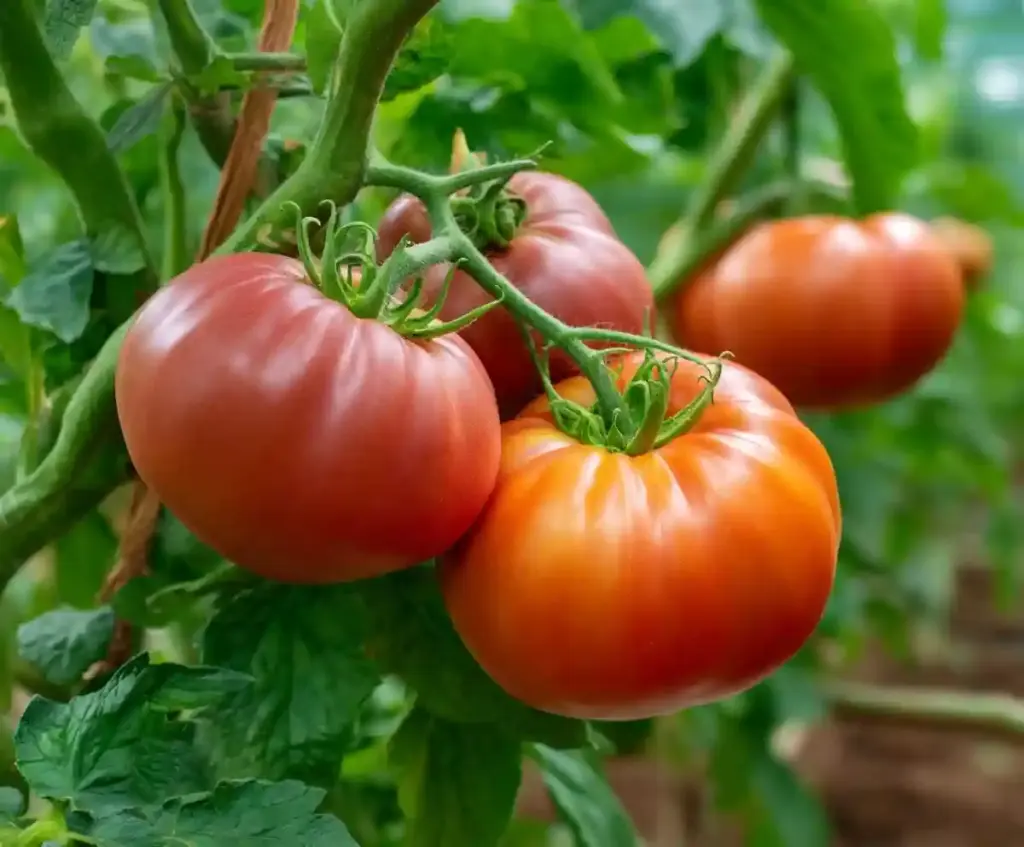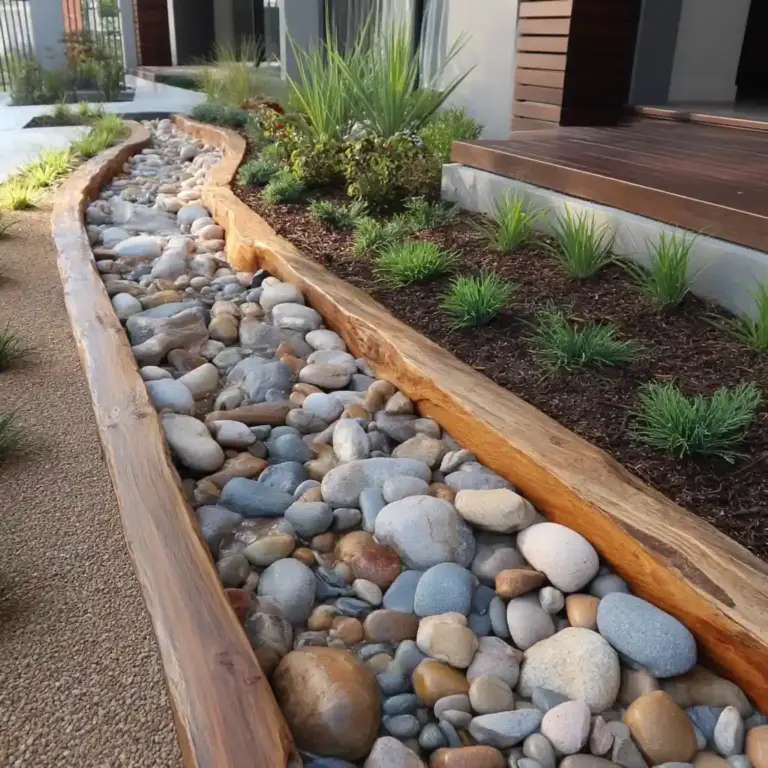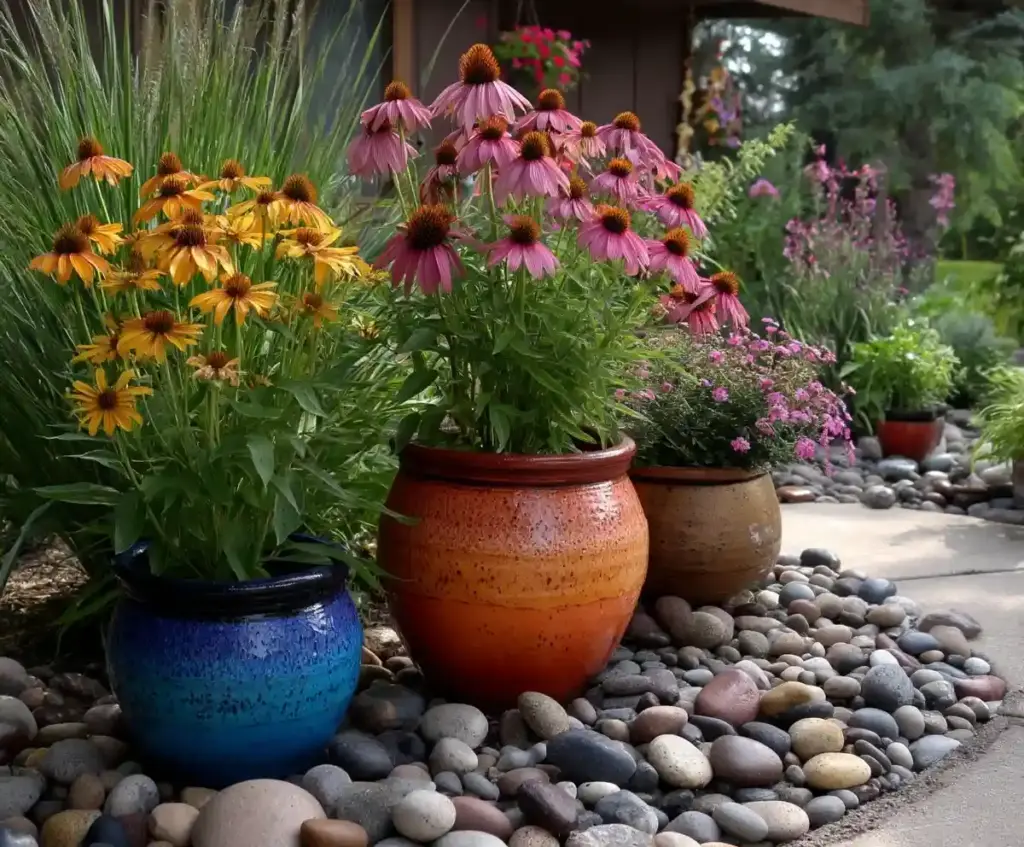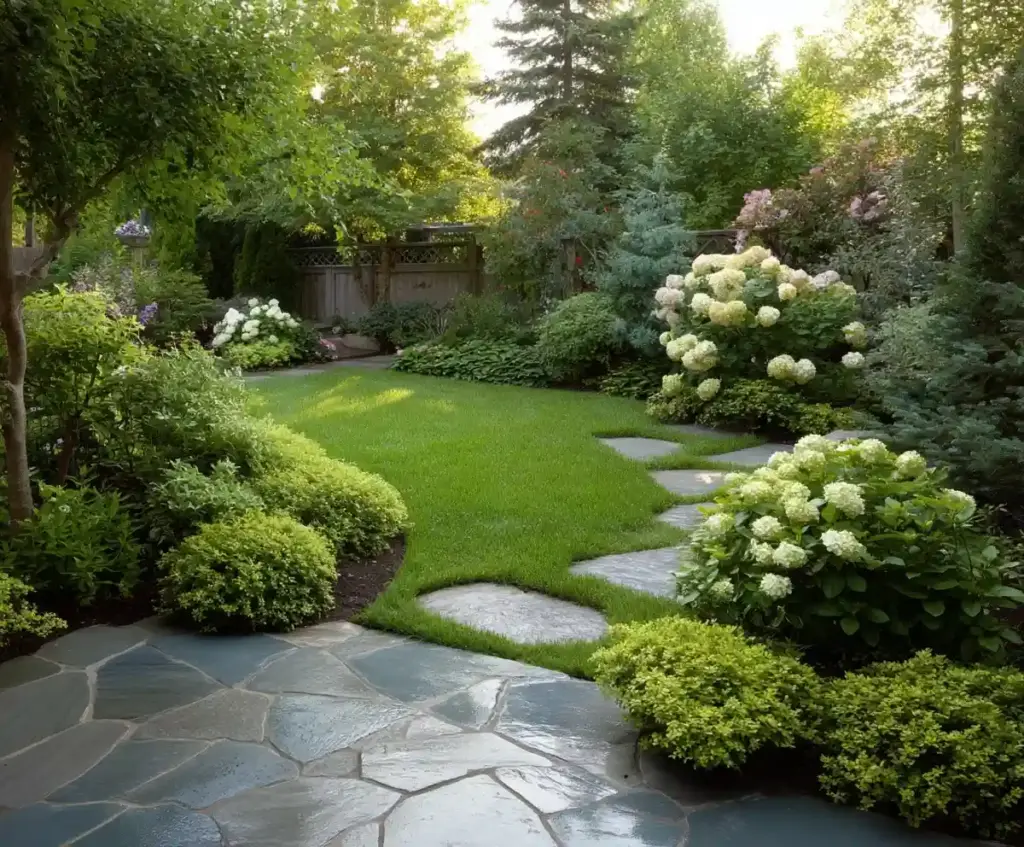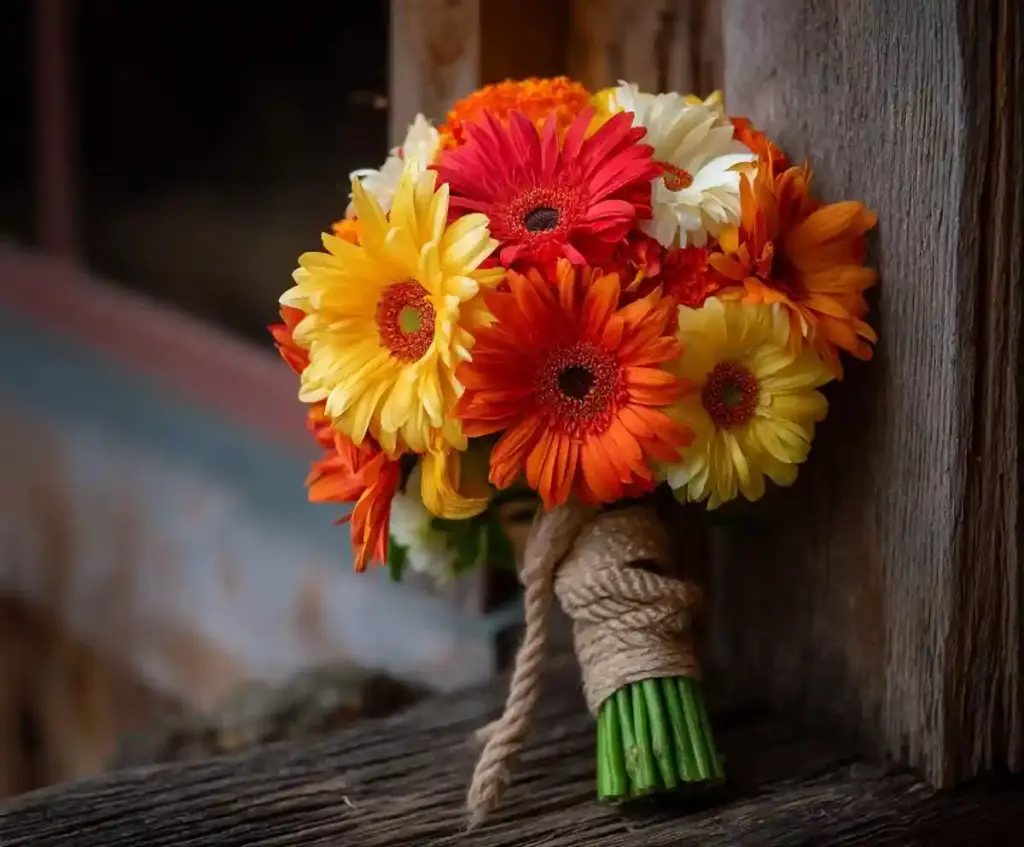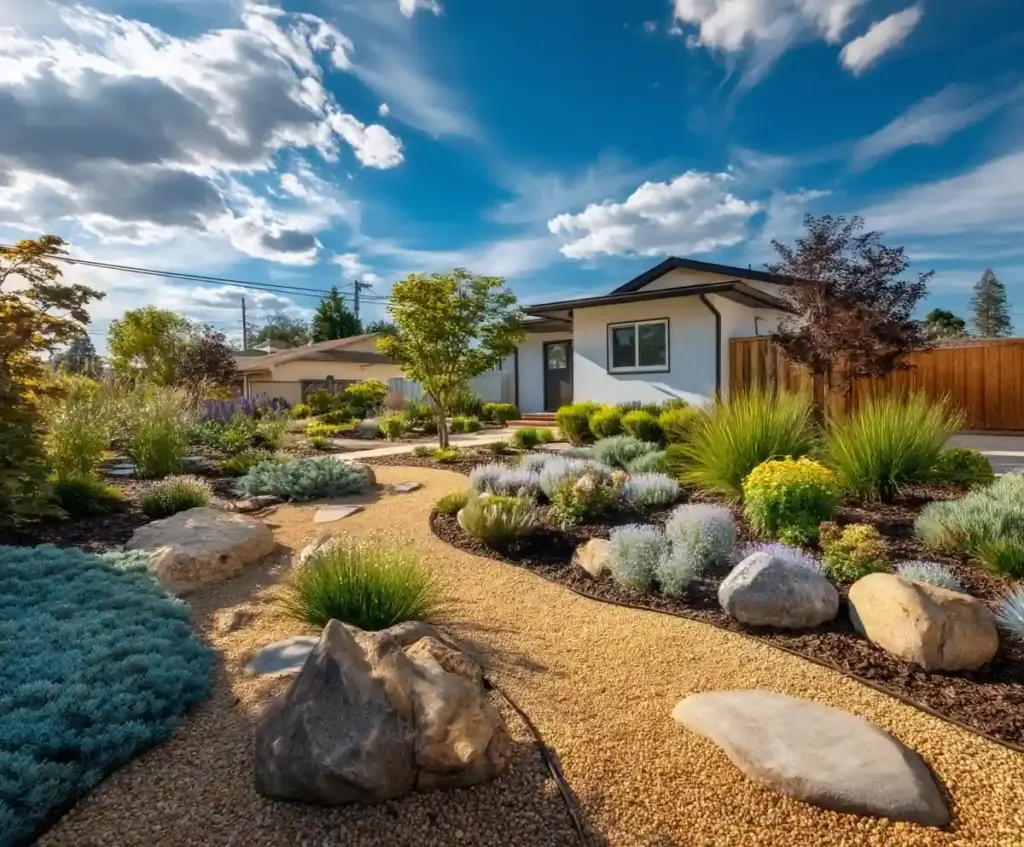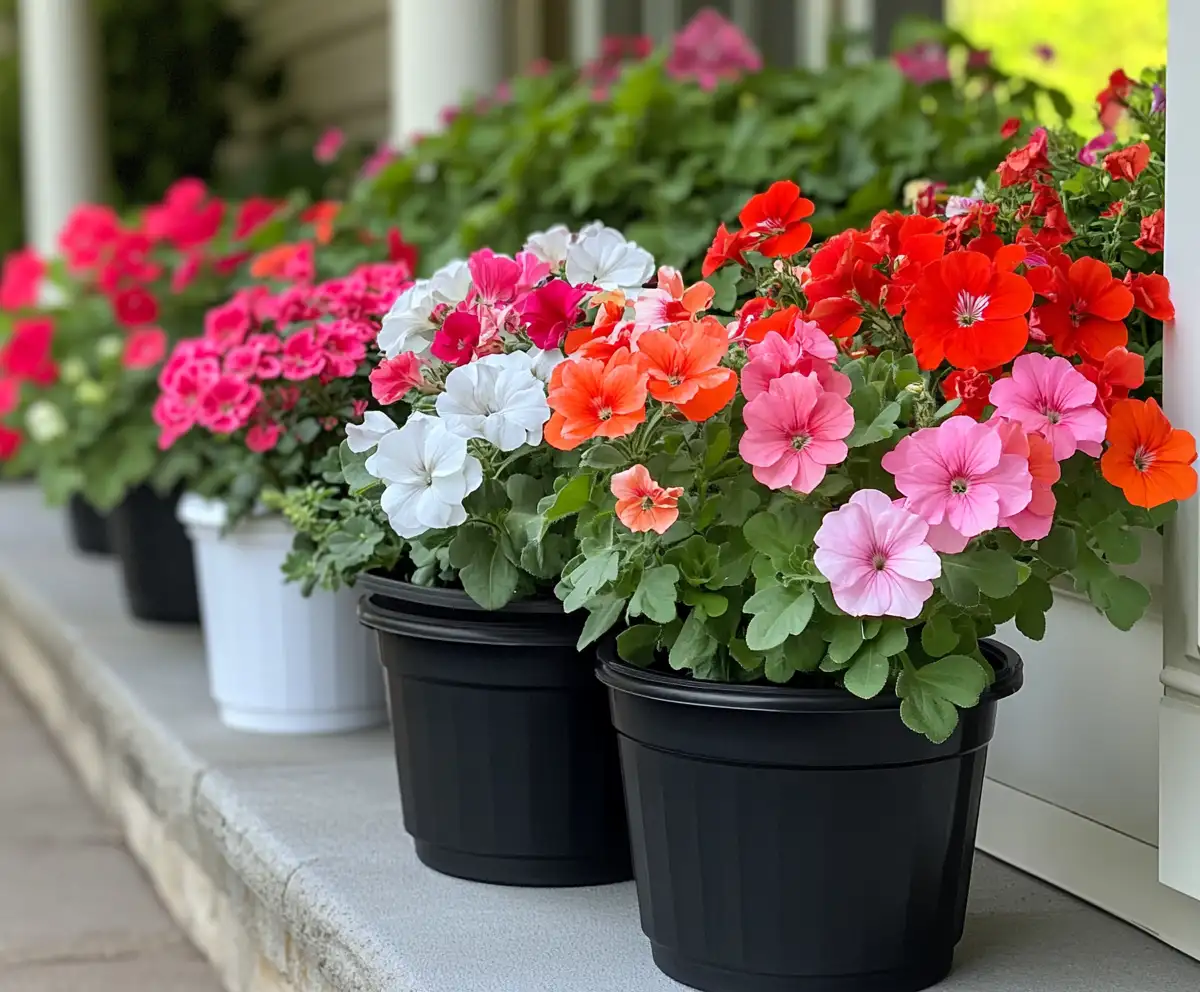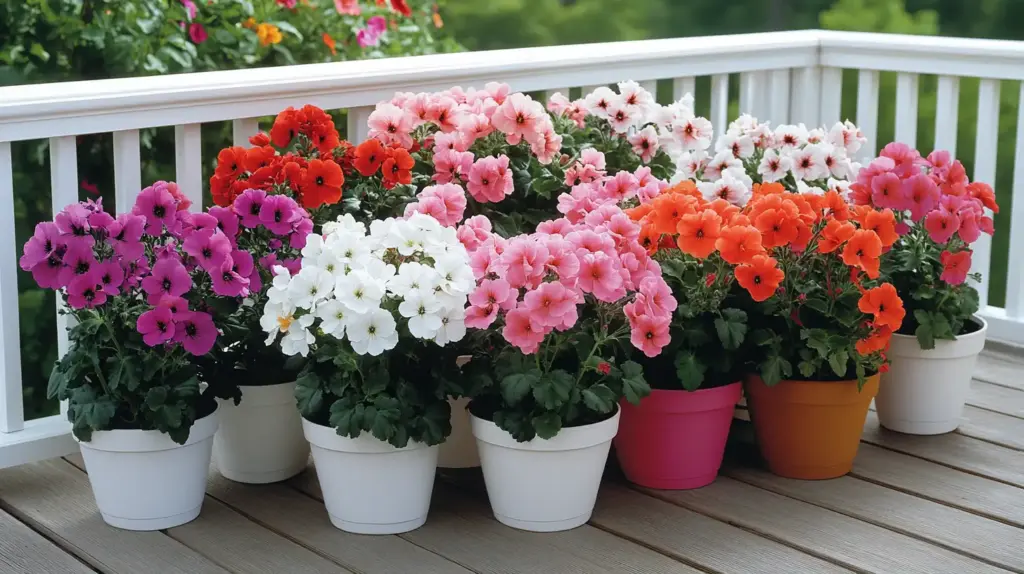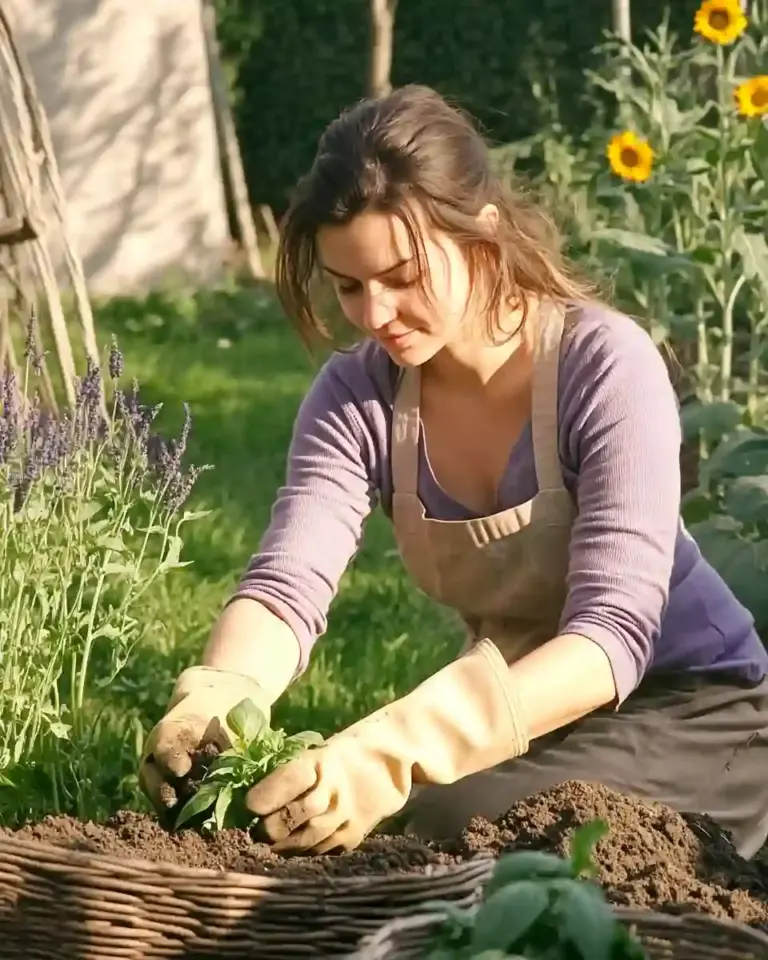Few plants offer the charm, color, and container versatility quite like begonias. Whether you’re brightening up a shaded front porch or creating an eye-catching balcony display, growing begonias in pots is one of the easiest and most beautiful ways to add instant life to your outdoor space. Their dazzling range of leaf patterns and flower colors make them a top pick for both beginner and experienced gardeners alike.
What truly sets begonias apart is their incredible adaptability. From sunny porch plants to cozy indoor nooks, these low-maintenance beauties thrive in a variety of environments. It’s no wonder more gardeners are embracing growing begonias in pots as a simple yet stunning solution for year-round curb appeal. If you’re looking for even more inspiration, explore our favorite begonia flower bed ideas or browse our guide to low-maintenance outdoor potted plants that pair well with begonias.
Table of Contents
🌱 1. Understanding Begonias
Before diving into the practical steps of growing begonias in pots, it’s important to understand what makes these plants so unique and beloved. The begonia genus includes over 1,800 species and thousands of hybrids, offering a stunning variety of colors, leaf patterns, and flower forms. From wax begonias to tuberous and rex varieties, there’s a type for every space and preference.
What sets begonias apart is their asymmetrical foliage—often beautifully patterned and textured—and their brilliant, eye-catching blooms. Some varieties are prized purely for their ornamental leaves, while others are grown for their abundant and long-lasting flowers.
Begonias are native to tropical and subtropical regions, but thanks to their adaptability, they can thrive in temperate climates as well. This flexibility is part of what makes them such a fantastic choice for container gardening. Whether you’re dealing with high humidity or dry air, there’s a begonia that will fit right in.
These are just a few of the reasons why growing begonias in pots is such a popular and rewarding choice. The key is matching the right variety to your environment and care preferences.
🪴 2. Selecting the Right Container
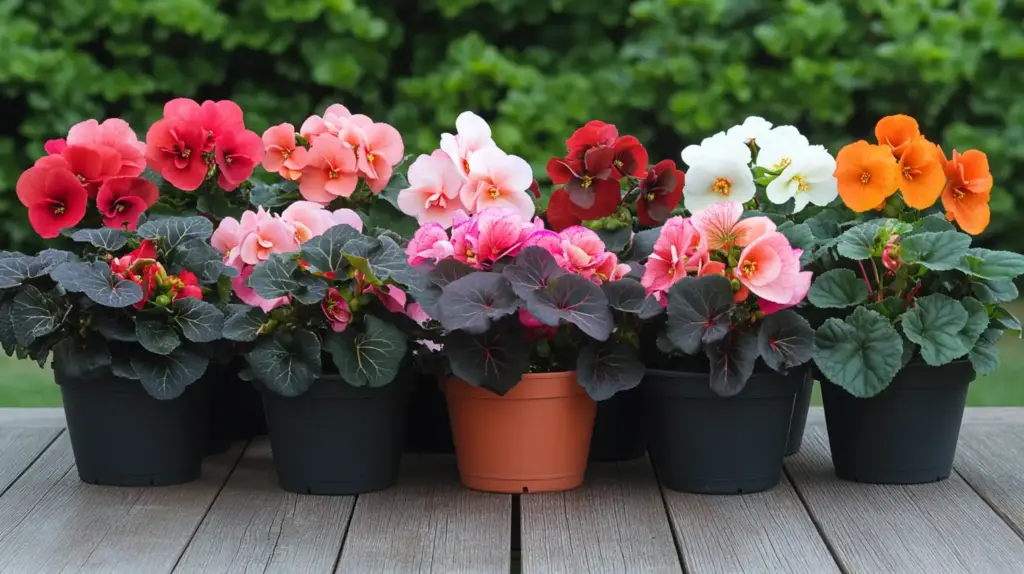
Choosing the right pot is a crucial first step in growing begonias in pots successfully. The container not only supports the plant structurally but also directly impacts root health, drainage, and overall growth.
✅ Size Matters
Begonias don’t like to be cramped. A container that’s too small can limit root development and lead to stunted growth. On the other hand, a pot that’s too large may retain excess moisture, increasing the risk of root rot. Aim for a pot that is just a couple of inches wider than the current root ball to strike the perfect balance. If you’re planting a mature begonia or combining multiple plants, go for a larger container that can accommodate their full root spread.
💧 Drainage is Critical
Begonias are highly sensitive to waterlogged soil. Without proper drainage, roots can suffocate and rot. Always choose a pot with multiple drainage holes at the bottom. Avoid pots with just a single hole or none at all — even with the best soil mix, poor drainage is a recipe for problems.
If your favorite decorative pot doesn’t have holes, consider double potting: place your begonia in a plastic grow pot with drainage, and then set it inside the decorative container.
🪨 Best Pot Materials for Begonias
When it comes to material, terracotta and unglazed ceramic pots are top choices. These porous materials allow excess moisture to evaporate through the pot walls, which helps prevent root issues and regulates moisture levels more effectively.
Plastic pots are lightweight and budget-friendly, but they retain more moisture — a factor to consider if you live in a humid climate. If you choose plastic, be extra diligent with your watering routine.
💡 Tip: If you’re repotting, always clean and disinfect old pots before reusing them to avoid passing along any lingering pests or diseases.
🧱 3. Choosing the Appropriate Soil Mix
One of the most important — yet often overlooked — aspects of growing begonias in pots is the soil. The right potting mix creates a healthy foundation that supports root development, water management, and nutrient absorption.
🌿 Well-Draining Is Non-Negotiable
Begonias are particularly prone to root rot if their roots sit in soggy soil. To prevent this, opt for a well-draining mix. A great blend includes:
- Peat moss – for lightweight structure and gentle moisture retention
- Perlite or pumice – to increase aeration and drainage
- Coarse sand – to enhance soil texture and reduce compaction
This combination keeps water moving while still holding onto enough moisture to sustain your begonias.
💧 Moisture Retention with Organic Matter
While drainage is crucial, the soil must also retain enough moisture to keep the roots hydrated — especially in warm or dry environments. Adding materials like compost, coconut coir, or leaf mold improves moisture retention and provides organic nutrients that enrich the soil.
If you prefer ready-made solutions, look for commercial potting mixes labeled for African violets or tropical plants — these often work well for begonias, too.
🔬 Aim for the Right pH
Begonias flourish in slightly acidic soil, ideally with a pH between 5.5 and 6.5. You can use a soil pH tester to check your mix. If your soil is too alkaline, amending it with peat moss or elemental sulfur can help bring the pH into the desired range.
🛠️ Quick Soil Mix Recipe for Begonias:
- 1 part peat moss or coconut coir
- 1 part perlite or pumice
- 1 part coarse sand
- Optional: a handful of compost for added nutrients
This balanced, breathable mix sets the stage for strong, healthy growth.
☀️ 4. Providing Optimal Growing Conditions
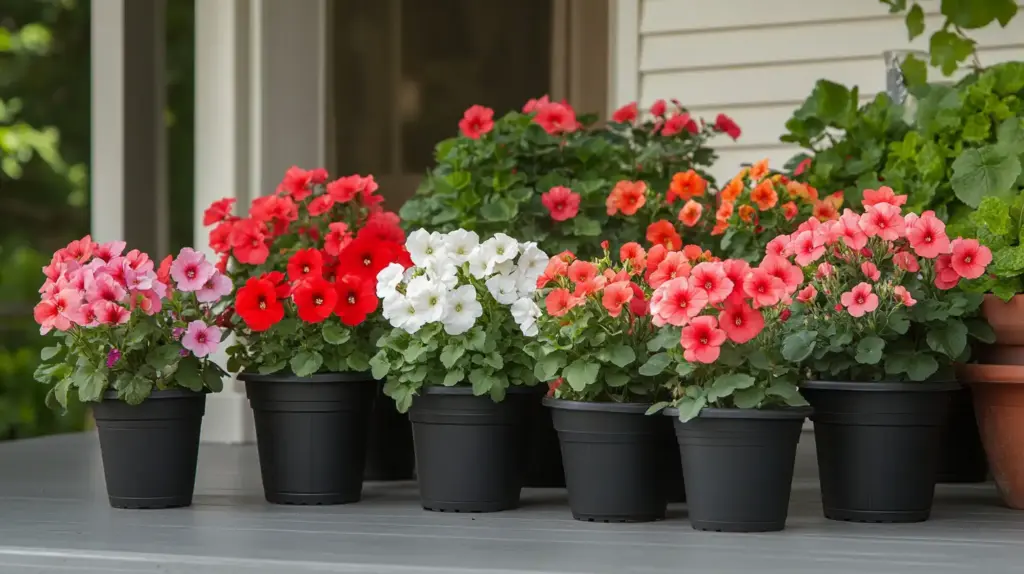
Creating the right environment is key to the success of growing begonias in pots. While these plants are flexible, they do best when their basic needs for light, temperature, and humidity are carefully met.
🌞 Light: Bright but Indirect
Begonias thrive in bright, indirect light. Too much direct sunlight can scorch their delicate leaves, while too little light may cause leggy growth and reduced blooming. The ideal setup is near an east- or north-facing window indoors, or in a shaded spot outdoors that still gets plenty of ambient light.
If you’re growing begonias indoors and natural light is limited, consider supplementing with LED grow lights that mimic the spectrum of natural sunlight.
🌡️ Temperature: Keep It Moderate
Begonias prefer a consistent temperature between 65–75°F (18–24°C). They are sensitive to temperature extremes—cold drafts and hot afternoon sun can both cause stress. Avoid placing pots near heating vents, air conditioners, or drafty windows.
Outdoor begonias should be brought inside or protected once temperatures begin to dip below 55°F (13°C).
💦 Humidity: The Higher, the Better
Humidity plays a big role in begonia health. These plants love medium to high humidity, ideally around 50–60%. In dry indoor environments, you can boost humidity by:
- Grouping plants together to create a mini microclimate
- Using a humidity tray with pebbles and water
- Running a room humidifier nearby
Avoid misting the leaves directly — while it seems helpful, it can actually encourage fungal problems if water sits on foliage too long.
🌿 Pro Tip: If your begonia’s leaf edges start to brown or curl, it may be a sign of low humidity or sudden temperature fluctuations.
🧼 5. Essential Care Tips
Even though begonias are relatively easy to manage, consistent care is key to keeping them lush, healthy, and blooming. Mastering a few basic routines will help you get the most out of growing begonias in pots.
💧 Watering: The “Goldilocks” Approach
Begonias like their soil moist but not soggy. Let the top inch of soil dry out before watering again. Stick your finger into the soil—if it feels dry to that depth, it’s time to water.
Use room-temperature water and pour it at the base of the plant to avoid wetting the leaves. Overwatering is one of the most common mistakes with begonias, especially in pots without adequate drainage.
🛑 Never let the pot sit in standing water — always empty saucers after watering.
🌱 Fertilization: Feed Lightly but Regularly
For vibrant blooms and strong foliage, fertilize begonias every 4 to 6 weeks during the growing season (spring through early fall). Use a balanced, water-soluble fertilizer—like a 10-10-10 or 20-20-20 formula—diluted to half strength.
Avoid overfeeding, which can cause salt buildup and damage roots. If you notice white crust on the soil surface, flush the pot with plain water to leach out excess salts.
✂️ Pruning: Keep Them Clean and Compact
Regular pruning keeps your begonias looking neat and encourages bushier growth. Here’s what to trim:
- Spent flowers: Remove to promote new blooms
- Yellow or damaged leaves: Cut off to prevent disease spread
- Leggy stems: Pinch back to encourage fuller growth
Clean your pruning shears with rubbing alcohol before and after use to prevent disease transfer.
🔁 Routine tip: Take a few minutes once a week to inspect, water, and groom your begonias—it pays off with healthier, more beautiful plants.
🐛 6. Common Pests and Diseases
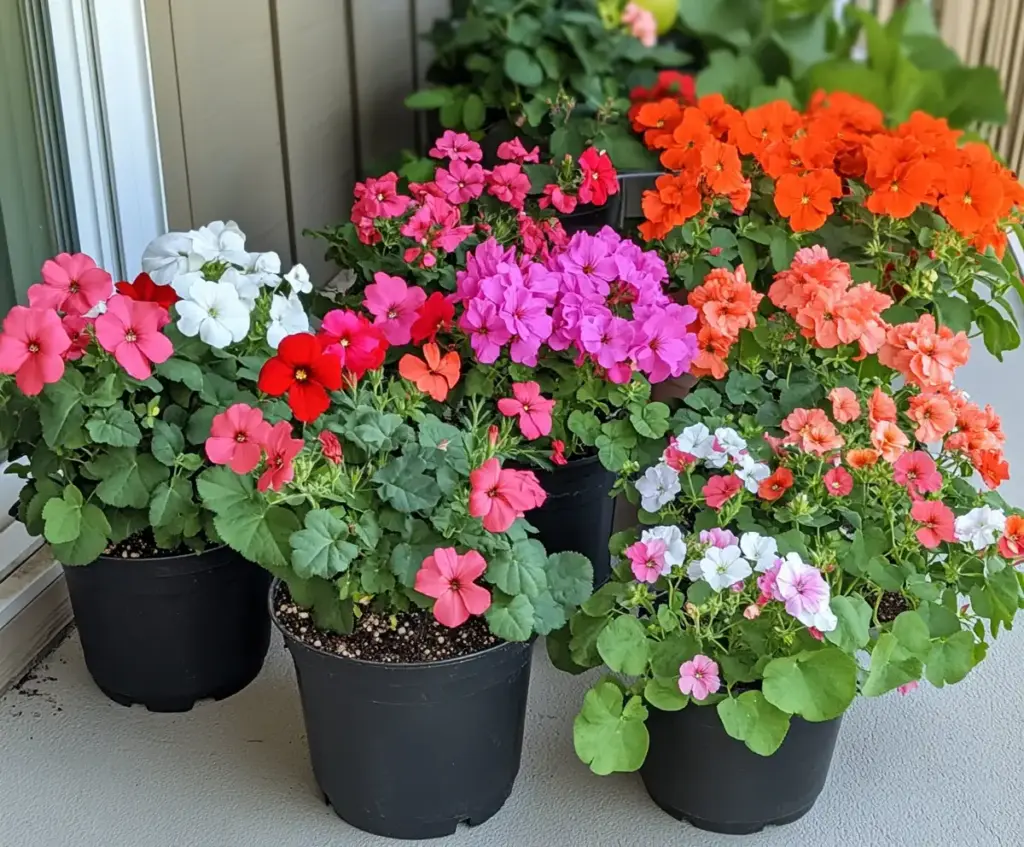
While growing begonias in pots is generally low-stress, these plants aren’t entirely immune to pests and diseases. The good news? Most issues are manageable if caught early. Here’s what to watch for—and how to respond effectively.
🐞 Common Pests
- Aphids
These tiny, soft-bodied insects tend to cluster on new growth. They suck sap, causing leaves to curl and growth to become distorted.
Control: Spray the plant with a strong jet of water to knock them off, or use insecticidal soap or neem oil. - Mealybugs
Mealybugs appear as white, cottony masses on stems and leaf joints. They can weaken plants by feeding on sap and excreting sticky honeydew.
Control: Dab each one with a cotton swab soaked in rubbing alcohol, or apply insecticidal soap. - Spider Mites
These are often too small to see clearly but leave behind fine webbing and speckled, yellowing leaves.
Control: Increase humidity (mites hate it), rinse the plant thoroughly, and use a miticide if needed.
🍄 Common Diseases
- Powdery Mildew
Appears as a white, powdery coating on leaves. It thrives in humid conditions with poor air circulation.
Solution: Improve airflow around your plant, avoid wetting the foliage, and apply a fungicide if needed. - Root Rot
Often caused by overwatering or poor drainage, root rot makes the plant wilt and yellow even when the soil is moist.
Solution: Repot into fresh, well-draining soil and trim off affected roots. Prevent future issues by adjusting your watering habits. - Botrytis (Gray Mold)
This fungal disease appears as fuzzy gray mold, especially on old blooms or injured tissue.
Solution: Remove affected parts immediately and increase ventilation around the plant.
🛡️ Prevention is the best cure:
- Always inspect new plants before introducing them
- Quarantine affected plants when needed
- Keep foliage dry and improve air circulation
🙋♀️ Frequently Asked Questions: Growing Begonias in Pots
1. Can begonias grow well in pots?
Yes! Begonias thrive in containers as long as the pot provides good drainage, proper soil, and the right light conditions. They’re perfect for patios, balconies, or indoor spaces.
2. What is the best soil mix for potted begonias?
A well-draining mix is essential. Use a blend of peat moss, perlite, and coarse sand, with added compost or coconut coir to retain moisture. The ideal pH is slightly acidic (5.5–6.5).
3. How much sunlight do begonias need in pots?
Begonias prefer bright, indirect light. Avoid harsh afternoon sun, which can scorch leaves. Indoors, place them near east- or north-facing windows.
4. How often should I water begonias in pots?
Water when the top inch of soil feels dry. Be careful not to overwater, as begonias are prone to root rot. Ensure excess water can drain freely.
5. Why are my begonia leaves turning yellow?
Yellowing leaves may indicate overwatering, poor drainage, or low humidity. Check soil moisture, repot if necessary, and increase humidity levels.
6. Do begonias need fertilizer in containers?
Yes, feed begonias with a balanced liquid fertilizer every 4–6 weeks during the growing season to encourage flowering and healthy foliage.
7. Can I keep potted begonias indoors year-round?
Absolutely. Many varieties of begonias adapt well to indoor environments with consistent temperature, humidity, and light.
8. How do I keep pests off my potted begonias?
Inspect regularly for aphids, mealybugs, and spider mites. Use insecticidal soap or neem oil, and isolate infected plants if needed.
🧾 Conclusion
Growing begonias in pots is more than just a method of beautifying your garden or home—it’s a deeply satisfying gardening journey that connects you to nature. Their bold foliage and vibrant blooms make begonias a standout in any container garden, whether on a city balcony or a shaded patio.
The real secret to thriving begonias is thoughtful care. Choosing the right pot, using a moisture-balanced soil mix, and providing consistent humidity and indirect sunlight all play a role. And when challenges like pests or mildew appear, addressing them early helps ensure your begonias stay vibrant.
From low-maintenance potted plant combinations to incorporating begonias into front porch flower displays, these versatile plants can be styled in countless creative ways. With a little attention and patience, growing begonias in pots transforms your space into a lush, colorful oasis that blooms with charm all season long.
🌿 Love gardening inspiration? Follow me on Pinterest for bold plant ideas, tips, and seasonal color!
More Posts
